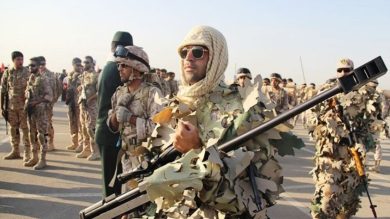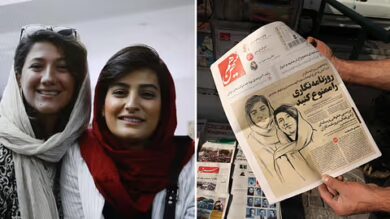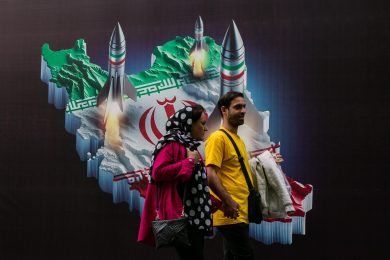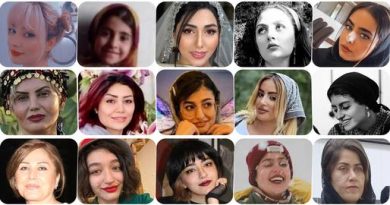For more than four decades, Iranian women have lived under the shadow of mandatory hijab laws—a powerful tool used by the Islamic Republic to control and subjugate. What began as a legal requirement soon evolved into a symbol of broader gender-based oppression, enforced violently by the morality police and the Islamic Revolutionary Guard Corps (IRGC).
Today, a new generation of women is boldly challenging these restrictions. From removing hijabs in public to launching viral campaigns on social media, Iranian women are making it clear: the hijab is no longer just a piece of clothing—it’s a battlefield.
1. Historical Context: The Rise of the Mandatory Hijab
The 1979 Revolution and Islamization of Public Space
After the Islamic Revolution, the new regime imposed strict Sharia-based laws, including:
• Mandatory hijab in public spaces
• Segregation of men and women in schools, buses, and offices
• Penalties for “immodesty,” including arrests, fines, and lashes
The hijab became not just a religious symbol but a political tool, forcing conformity and silencing dissent.
Resistance from the Beginning
The very first women’s protests post-revolution were against compulsory hijab, signaling that resistance was embedded from the start. Though these early protests were suppressed, they planted seeds for future movements.
2. The Role of the IRGC and Morality Police
Enforcement of Hijab as State Control
The IRGC, along with Iran’s morality police (Gasht-e Ershad), is responsible for:
• Policing women’s clothing in public
• Detaining and physically assaulting those who resist
• Monitoring social media for images of unveiled women
• Linking hijab violations to “national security threats”
The Case of Mahsa Amini
In September 2022, Mahsa Amini, a 22-year-old Kurdish woman, died in custody after being arrested for “improper hijab.” Her death sparked nationwide protests, led primarily by women, that continue today under the banner of “Women, Life, Freedom.”
3. Hijab as Resistance: What It Really Means
A Personal Act of Defiance
For many Iranian women, removing the hijab in public is an act of civil disobedience and self-empowerment. It challenges:
• State ideology
• Gender norms
• Religious authoritarianism
Beyond Religion: The Political Symbolism
While some women choose to wear the hijab by belief, the problem lies in compulsion. Many Iranian women argue:
“Hijab should be a choice, not a mandate. Forced modesty is not modesty at all.”
4. Digital Resistance and Global Campaigns
The Role of Social Media
Women use platforms like Instagram, Twitter, and Telegram to:
• Share images and videos without hijab
• Document abuse by police and IRGC
• Organize protests and support networks
#MyStealthyFreedom & Beyond
Journalist Masih Alinejad’s #MyStealthyFreedom movement encouraged Iranian women to post hijab-free photos online, sparking a viral campaign that:
• Exposed regime hypocrisy
• Built international solidarity
• Inspired offline action
5. Repercussions and Risks
Legal and Physical Consequences
Women defying the veil face:
• Imprisonment, flogging, or fines
• Harassment and threats
• Loss of jobs or university positions
• State-sponsored smear campaigns
The Regime’s Fear
The growing number of unveiled women walking confidently in public has terrified the regime, prompting new crackdowns, including:
• AI-powered surveillance to track uncovered heads
• Bills increasing hijab enforcement penalties
• Arrests of celebrities and influencers who support the movement
6. Solidarity From Iranian Men and the Diaspora
Men Join the Fight
While women lead, many Iranian men have:
• Shaved their heads in protest
• Participated in joint demonstrations
• Formed groups to protect women from police abuse
Iranian Diaspora’s Role
Iranians abroad organize:
• Rallies in major cities
• Media campaigns
• Petitions for international sanctions against the IRGC
7. What the Future Holds
The End of Compulsory Hijab?
Despite the government’s continued repression, the collective refusal of Iranian women to comply has made the law unenforceable in many cities. Even regime insiders are questioning its utility.
Broader Implications
This is not just a fight about clothing—it’s about:
• Autonomy
• Bodily rights
• Challenging authoritarianism
Iranian women’s resistance may be the key to dismantling the regime itself.
8. How the World Can Help
• Amplify Iranian voices on social media
• Pressure governments to sanction human rights violators
• Support VPN and digital security access
• Push for the IRGC’s designation as a terrorist group in more countries
• Fund independent media and legal support networks
Conclusion
The hijab is no longer just a headscarf in Iran—it’s a symbol of oppression, control, and defiance. Iranian women, by saying “no” to compulsory veil laws, are leading a revolution of identity, freedom, and democracy.
The world is not just witnessing their bravery; it is being called to stand beside it.
Join Our Newsletter!
Stay informed with the latest updates, news, and ways to take action in the fight for justice and global security. Sign up now to get updates delivered straight to your inbox!





